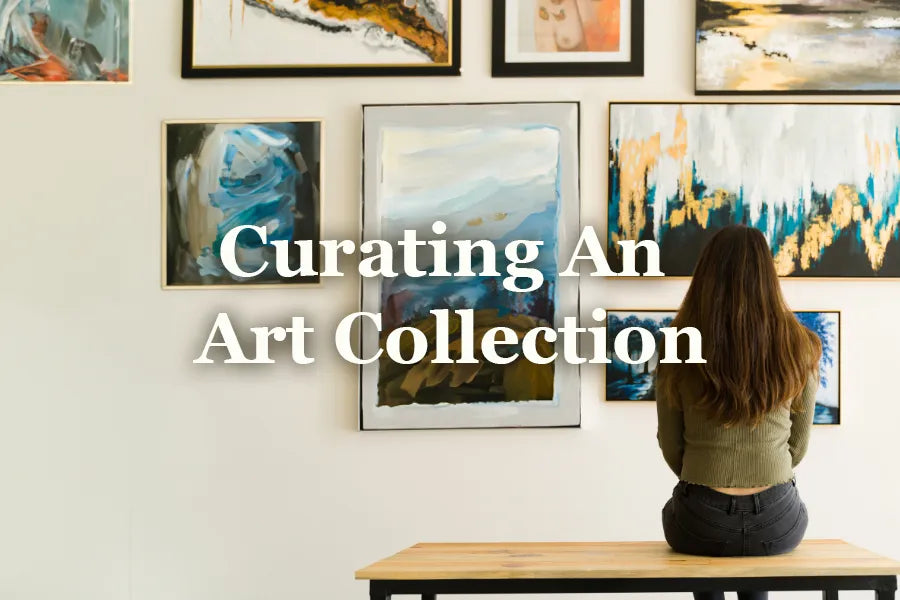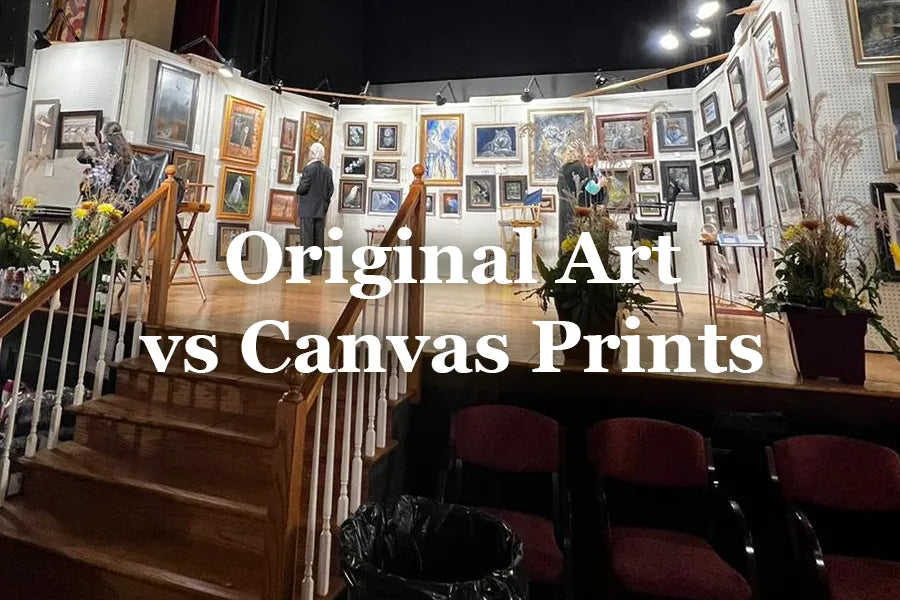The History of Canvas Printing: From Time-Honored Traditions to Modern Appeal
Canvas printing has a long history, rich with innovation and story. This medium has evolved a lot over centuries, reflecting both technological advancements as well as changing tastes in art. Let’s trace the origins and development of canvas printing and find out how this modern art form came to be.

The Origins of Canvas in Art
Canvas as an art medium dates back to the early Renaissance period, around the 14th century. Before the widespread use of canvas, artists had to rely primarily on wooden panels for their paintings. These panels, while sturdy, were inflexible and cumbersome, limiting the scale and scope of artworks. That eventually lead to the the rise of canvas. Typically made from linen, this new medium was a game-changer. Not only was it more flexible, but it was also far more durable than wood. Its adaptability was quickly recognized, setting the stage for a seismic shift in artistic possibilities. The art world was on the brink of a revolution, and canvas was at the heart of it.
 "Allegory of Painting" Oil on canvas by Artemisia Gentileschi, 1639
"Allegory of Painting" Oil on canvas by Artemisia Gentileschi, 1639
A New Medium for Masterpieces
Canvas didn't just offer an alternative to wooden panels; it revolutionized how art was created and experienced. Artists like Leonardo da Vinci and Michelangelo were quick to recognize the game-changing potential of this new medium. Canvas provided not only versatility but also a unique texture that enriched the visual appeal of artworks. Its forgiving surface allowed for corrections and layering, giving artists greater creative freedom. As a result, some of history's most iconic masterpieces found their home on canvas, setting a new standard for artistic expression.
 "Las Meninas" Oil on canvas by Diego Velázquez, 1656
"Las Meninas" Oil on canvas by Diego Velázquez, 1656
The Spread of Canvas Across Europe
The use of canvas then expanded beyond Italy, influencing art across various cultures. As it reached Northern Europe, the lighter weight and adaptability of canvas made it an instant favorite among artists. This allowed for the creation of larger, more intricate paintings that could be easily transported, breaking geographical and logistical barriers. With canvas, artists weren't just painting; they were making history, contributing to a new era of global art exchange and innovation.
 "The Art of Painting" Oil on canvas by Jan Vermeer, 1668
"The Art of Painting" Oil on canvas by Jan Vermeer, 1668
Technological Innovations: The Beginning of Canvas Printing
With the progression of technology, the 20th century saw the emergence of canvas printing. This process enabled artists to replicate their original works on canvas, offering a win-win situation for both artists and art collectors. Now, artists could reach a much broader audience without compromising the integrity and quality of their work. This evolution made it possible for more people to own a piece of art that they admired, without needing an original. In short, canvas printing became the bridge that connected traditional art to modern, digital capabilities.

The Rise of the Giclée Print
The late 1980s marked a significant milestone for canvas printing with the development of the giclée method. Utilizing advanced inkjet technology and high-resolution digital scans, giclée transformed the way art could be reproduced. The method excels in capturing the fine details and vibrant colors of original artworks, setting it apart from other printing techniques. This precision in color reproduction quickly made giclée a go-to choice for artists who wanted to replicate their works without compromising quality. As a result, giclée prints have gained wide recognition and acceptance, not just among artists but also among galleries and art collectors.
Accessibility and Affordability
This digital age has democratized canvas printing, making it accessible and affordable to a wider range of people. Online platforms and advancements in printing technology have allowed aspiring artists and art lovers to create or purchase canvas prints with ease.

Contemporary Times: Canvas Printing Today
Fast forward to today, and canvas printing has become a dynamic, versatile medium that's well-suited for a variety of applications from fine art, home décor, and commercial use. The technological advancements in printing have also made it easier than ever to create high-quality reproductions. At the same time, the industry is becoming increasingly aware of its environmental footprint. Many companies are adopting eco-friendly materials and sustainable practices in their printing processes, showing that canvas printing is not just adapting, but also evolving.

Bridging Traditional and Modern Art
Canvas printing is where the old meets the new in the art world. By combining traditional canvas material with today's digital printing technology, artists get the best of both realms. This approach lets artists tap into modern techniques like high-resolution imaging and digital manipulation, all while keeping the authentic look and feel of a classic canvas. It's a win-win: the digital aspect allows for quick edits and limitless creativity, while the canvas adds the beautiful texture and depth we all love.
 "Countryside Dream" Canvas art print
"Countryside Dream" Canvas art print
Final Thoughts
From its humble beginnings in the Renaissance era to its modern evolution as a versatile medium, canvas printing has a rich legacy that continues to inspire and captivate. So, perhaps this history lesson on canvas can help you find a deeper connection to the canvas prints that grace your walls, knowing the centuries of craftsmanship and innovation that have shaped this form of art.
Seeking a distinctive addition to your collection?
Explore the online gallery of Chuck Black original paintings.
Browse The Collection





